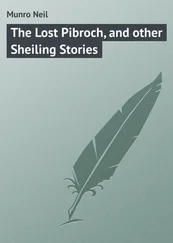The papyrus from Heracleopolis, and other such (e.g., the wrapping of the crocodile mummy)— All these are, alas, invented, but some details relating to handwriting, sites of excavation and the like derive from information in E. G. Turner, Greek Papyri: An Introduction (London: Oxford at the Clarendon Press, 1968).
Description of the Sphere of Fixed Stars (“that great blue dome of ultramarine”)— Based on the ceiling dome of San Spirodione Taumaturgo in Trieste.
Description of “the gloomy latitudes”— After a visit to Patagonia in December 2011.
The magical procedures followed on the island— Abbreviated from Sayed Idries Shah, The Secret Lore of Magic: Books of the Sorcerers (New York: Citadel Press, 1958), pp. 25–27 (The Key of Solomon, Son of David).
“The Patriarchs”: “There is no resurrection without death.”— Actually, Patriarch Gavrilo (1881–1950), as quoted in Anzulovic, p. 14.
The silver likeness of Saint Blasius— Seen by WTV in Ragusa (Dubrovnik).
Description of Mrs. Cirtovich— After a bust by Ruggero Rova (Trieste 1877–1965), Il Sorriso, 1910.
The Serbian crosses of black tar— Montague Summers, The Vampire in Europe (New Hyde Park, NY: University Books, 1968; orig. ed. 1929?), p. 159.
The lucky man who dies at Easter— Lazarovich-Hrebelianovich and Lazarovich-Hrebelianovich, vol. 1, p. 26.
“Society has no way out of disappointment…” — Djilas, p. 257.
THE MADONNA’S FOREHEAD
In some versions of the tale of why she bled, a frustrated player threw a boca ball at the Madonna’s forehead. In the others, someone threw a stone, not a brick. She was the Madonna delle Grazie, or “Dei Fiori”—by one account the property of the family Fiori, since she was found in the nineteenth century when someone was digging in the Fioris’ garden.
“we may conceive of the masochism merely as a painting…” — Wilhelm Stekel, M.D., Sadism and Masochism: The Psychology of Hatred and Cruelty, trans. Louise Brink, Ph.D., vol. 1 (New York: Liveright, 1953 repr. of 1929 ed.), p. 210.
Varying opinions regarding the Madonna’s forehead— In the end our disagreements solidified into two factions, which assembled themselves in the appropriate cafés. Speaking on behalf of the old men, I want to dig my finger’s crook into your collarbone so that you’ll believe me when I insist that life was much better when we possessed as many theories as Triestini, and discussion was as many-grooved as the costumes for “Aida”…—when we could mumble into our grappas about the Madonna, our mumblings even extending beyond the metaphysical to erotic considerations, so that the rancor with which we contested our interpretations of her spilled blood could, just like our city’s yellow, soapy-feeling old marble, dissolve decade by decade in the acidic air. Oh, but human nature’s not like that! At my stage of life, all I want is the lovely blue sky with grey cream in it; and however bad it was, the past stays safely past; that Trieste’s always misty blue and white like a faded travel poster. Until the Romans roofed this territory with their authority, it was contested among Illyrians, Istrians, Celts and others; and after the Romans, first Venice, then Austria and finally Italy got their hands on it. Napoleon was here in 1797, just for the day. But I didn’t live through most of that, so it’s pleasant to talk about; I never oppose local color; in fact, I’m proud of that blue-and-red fragment of the old Teatro Verdi. — Nowadays it’s less complicated. There are only two factions: the light and the darkness. Of course, I forget which is which.
CAT GODDESS
The bright yet pastel-like oil paintings of Leonor Fini celebrate femininity, androgyny, narcissism, surrealism and decadence. Often her women are Klimt-like in their pallid elongations. Aside from her cats, she loved nothing better than a good quarrel; best of all was when she orchestrated a falling-out between two of her friends. In 2009 I visited a postmortem retrospective of this great artist’s work at the Museo Revoltella — the perfect venue, I decided, admiring some more Tominzes in gilded oval frames: near-naked young women fiddling with themselves. In the dead Baron’s library, the backs of the chairs were carved with twin caryatid-like females who played quite busily with their own breasts. The red velvet cushions reminded me of Leonor Fini’s lips. Mostly, of course, I studied Leonor’s paintings. Entranced, I expressed my appreciation to the coat check girl. She smiled and said: Can you catch me? — Before I realized who she was, a strangely pallid corseted woman in a lace-sleeved red tunic was running through Trieste, daring me to kiss her. Lace around her throat, lace between her legs; oh, my! Finally she permitted me to grasp her from behind while she leaned against an antique column. As it happened, in those days I was still as handsome as Napoleon used to be back in 1805, so when I asked for a kiss, I hoped for assent, but she said: I’ll only make love if you act like a woman. — When I finally agreed, that wary-eyed tease, as magnificently black-clad (in gloves, dress, the whole works) and as regally bored as the Duchess of Aosta, refused to take anything off. Maliciously giggling, she next proposed that I act like a cat. But I did not wish to. Fortunately for my aspirations, the previous night I had caught a ghost-fish, which I was wearing around my neck (for creatures of that sort never stink), so I held it out into the air behind Leonor’s ankles, and then, just as I had hoped, three of her ghost-cats crept out of nowhere to bat that spirit-meat between them and finally share a few nibbles. This sight softened my friend, so she led me into an irregularly edged apartment tower whose windows, each of a different shape, were shuttered by concretions of unpainted planks; and in one room we lay down together to fill each other with Trieste, where the afternoon sky is bluer and the trembling bedroom curtains so much whiter that they might as well be silver and gold.
Several descriptions of Leonor Fini’s paintings and of photographs of her derive from illustrations in: Museo Revoltella Trieste, Leonor Fini: L’Italienne de Paris [exhibition catalogue] (Trieste: 2009), and Peter Webb, Sphinx: The Life and Art of Leonor Fini (New York: Vendome Press, n.d.).
A few descriptions of elegant Triestinas are based on photographs in Elvio Guagnini and Italo Zannier, eds., La Trieste dei Wulz: Volti di una Storia: Fotographie 1860–1980 (Trieste: Alinari, 1989).
The shy little marble girl— Sculpted by Donato Barcaglia, 1871. Now in the Museo Revoltella in Trieste.
The story (which Leonor especially loved) of Maximilian and “La Paloma”— From Webb, p. 10.
The “slim, lovely young wasp-waisted beauty in a black jacket-skirt and black tights who held a whip and sometimes permitted him to feed tidbits to her pet bulldog”— Based on a painting by Giuseppe de Nittis, 1878, La Signora del Cane (Ritorno dalle Corse), which I saw at the Museo Revoltella.
Description of Rijeka— After a visit there in 2009.
The pale man in the photographer’s doorway in Prague— After a photograph in Pavel Scheufler, Fotografiké Album Čech 1839–1914 (Prague?: Odeon, 1989).
Leonor’s inability to face the death of her own cats— Webb, p. 207.
Leonor’s interest first in cadavers, then in mummies and skeletons— Somewhat after a direct quotation in Webb, p. 11.
“I dislike the deference with which your Rossetti’s been treated.”— Ibid., p. 71, somewhat altered.
The perfumed cat excrement at Leonor’s— After Webb, p. 46, who implies that the story may be apocryphal.
The pale women wading naked in dark water— After Museo Revoltella Trieste, pp. 160–61 ( La Bagnanti, 1959).
Читать дальше












